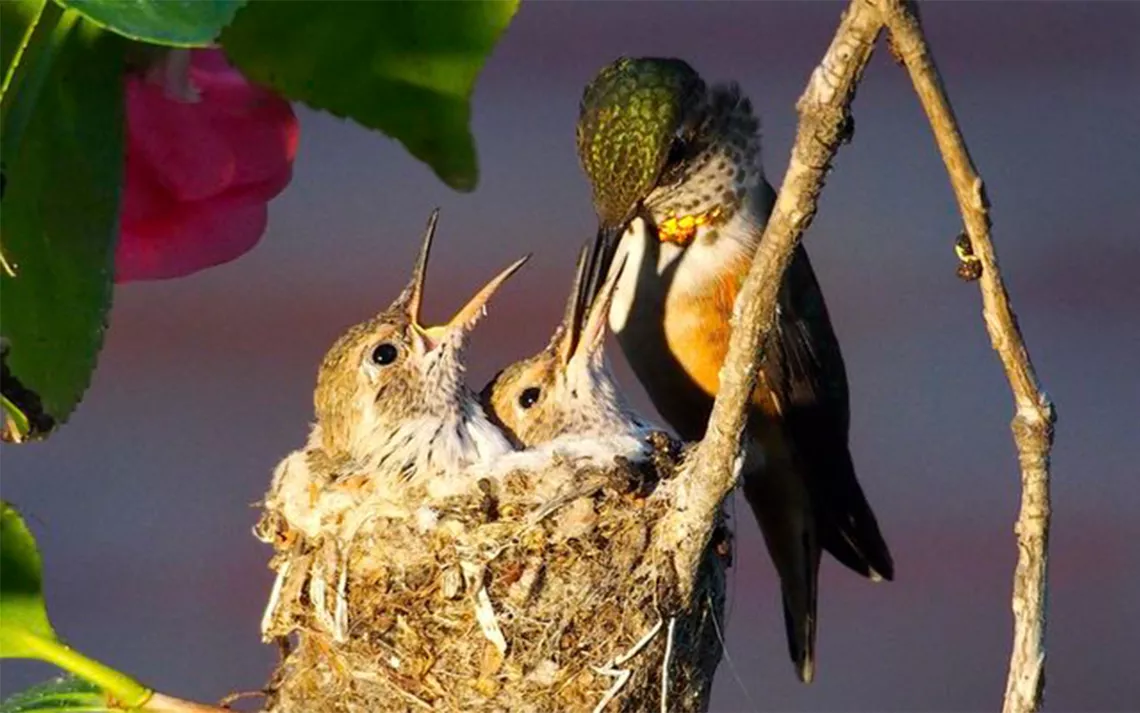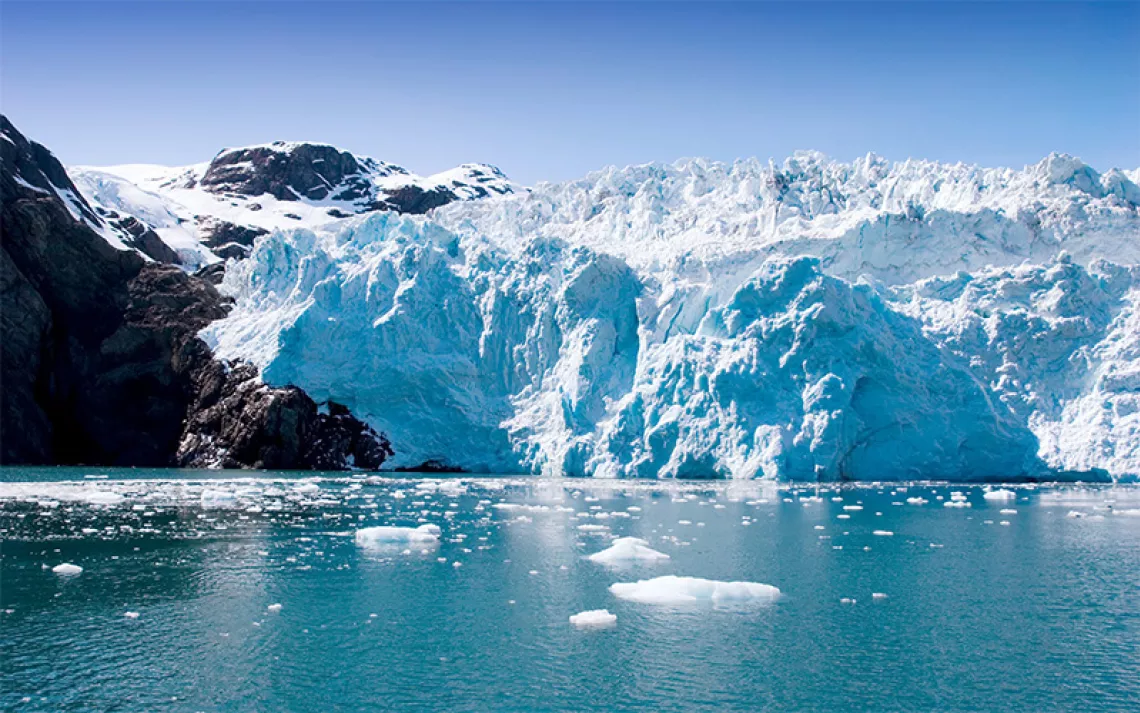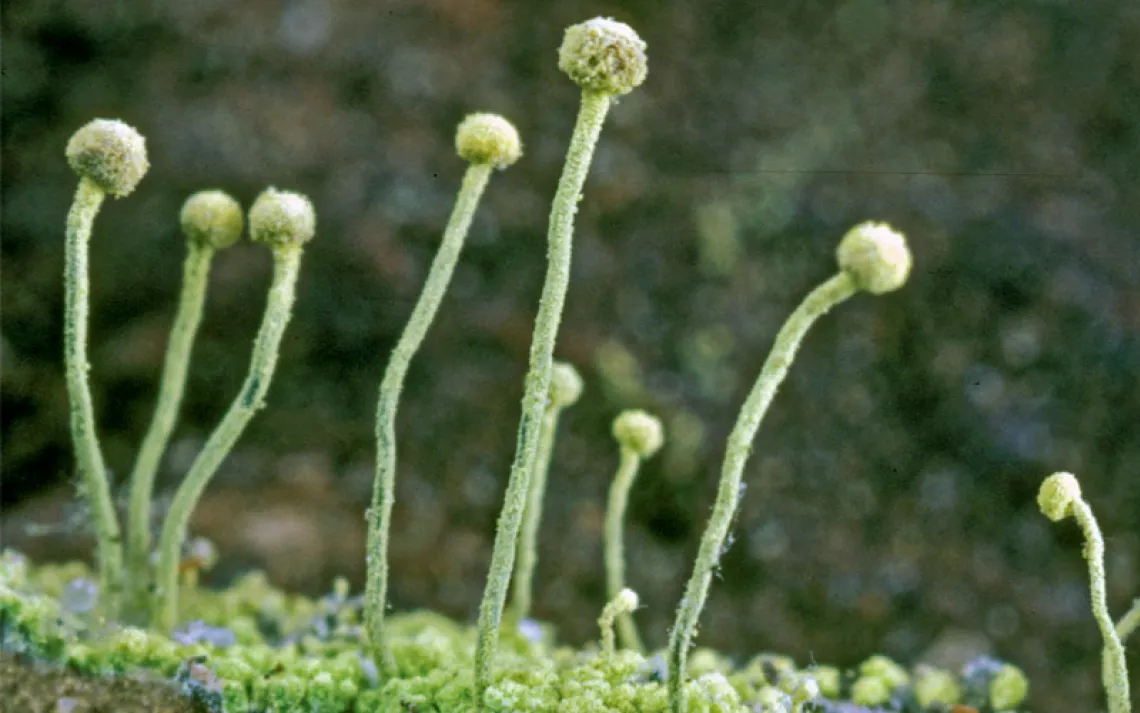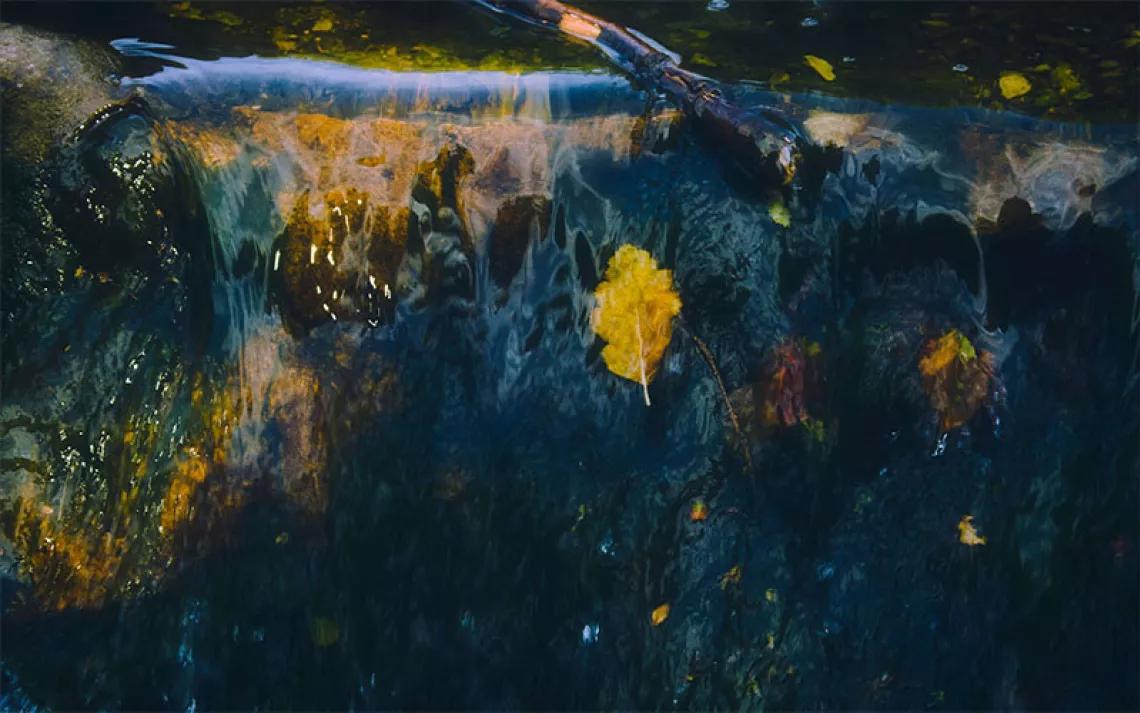Meet the Hummingbird Whisperer
A UCLA geologist has turned her office into a hummingbird paradise

Photo courtesy of Melanie Barboni
Ask around the UCLA campus for the crazy hummingbird lady and they will direct you to the office of Melanie Barboni—a post-doctoral fellow on the ground floor of the geology building. There, Barboni oversees a fairyland of hummingbirds, where over 200 of the diminutive feathered sugar-fiends perch on four 80-ounce feeders. Not only do they nest in the surrounding trees, some even fly into her office and perch on her fingers for belly rubs. Barboni is so bonded with the birds, she has named and can easily recognize 50 of the resident hummers, including Marshmallow, Zircon, and Stromboli.
We asked Barboni to tell us how a geologist became the hummingbird whisperer and how to get a few of the beautiful birds in our own backyards.
So how did you become the “crazy hummingbird lady”?
I was born in Europe and have been fascinated with birds and hummingbirds, but the problem is there are no hummingbirds in Europe. It was a childhood dream for me to see hummingbirds, so when I moved to Los Angeles, the first thing I did when I took my office at UCLA is put a feeder on my window. I just waited hoping that a hummingbird would come and fly by. I didn’t have to wait long. A female hummingbird showed up right away, and she just looked at me and sat on the feeder and started drinking.
For a couple of months she was my only guest—her name is Squeak by the way—and we kind of bonded. She started getting curious about me and checking me out. One day she was in my office. Then she was sleeping there. And then I could rub her belly. After a couple of months, it was nesting season so she put up a little nest just in front of my office, but because she was guarding the nest, she couldn’t protect the little feeder like she was doing before. So I had other hummingbirds showing up at that point.
How many do you have now?
The situation kept growing, and more hummingbirds started making their nests in front of my office, and I had all these babies. I had to increase the number of feeders and the amount of nectar because the population kept growing to a point that now we have over 200 hummingbirds outside. It’s a fairytale story in a way, and everybody at UCLA now knows about this hummingbird place because there are so many of them.
What tips do you have for people who want to start feeding hummingbirds?
First of all, it’s very important to give them the right diet. Basically you want to reproduce what is inside the flower, which is one part white granulated sugar and four parts water. I advise you to boil the water, because then you get rid of some of the chemicals. Once you have this nectar mix, you should store it in the fridge for a maximum of two weeks. If the feeder is in the direct sun or a humid place like Florida or Louisiana, or if the temperature is above 80, I would say you have to change the nectar every day. If it’s in the 70s and dry, you can leave it for two or three days. Never give them anything else but this nectar recipe. The nectar with red dye they sell in the shops is very, very bad for the birds. It damages their liver. I’m getting my rehabbers license, so I’ve been treating some of these birds. It’s really awful.
And cleaning the feeders is important, too. You want to get rid of any mold. These birds are very tiny, and even a tiny trace of mold can poison them. Once a month, the feeders need a bleach bath for 50 minutes.
Do you travel to see hummingbirds?
I don’t have that kind of money right now, but I would really like to go to Ecuador and Costa Rica. I do go on a regular basis to southeast Arizona, to the sky islands, where you can see easily 10 to 13 species of hummingbirds in season. Actually, last week we saw 12 species of hummingbirds there. I’m moving to Arizona next year for a new job, so I will be closer to them.
What will happen to your hummingbird flock when you are gone?
My officemate and good friend is going to take good care of them when I’m away. She has actually bonded with the birds, too, so they really, really interact with her. I’m trying to push UCLA to do a pollinator garden in the pasture in front of my office. It would be a perfect place, not only for the hummingbirds but also for the bees and butterflies and everything. Ultimately, what I would like is for the birds to have a native habitat where we don’t need a feeder anymore, where they can live in that pasture. You know most of them were born there; for three years we’ve had baby hummingbirds. I have something like 60 nests per year. If we could make a beautiful garden for them, where they can pollinate and do their job and use that as an educational tool to encourage people to plant natives and respect the birds, that would be awesome.
Will you have a similar setup at your new office?
I won’t have a ground-floor office, but I will have a house this time, and I plan to make a hummingbird habitat. There are a lot of hummingbirds in the Phoenix area, so I’m going to plant everything they need and make sure they have a nice place, and I hope they show up.
What’s the best thing people can do for hummingbirds?
Plant a couple native flowers in your garden that will attract hummingbirds. They will reward you by being awesome and give you so much joy to observe.
This article has been modified since its original publication.
 The Magazine of The Sierra Club
The Magazine of The Sierra Club







